Successful 9V Battery Strategies
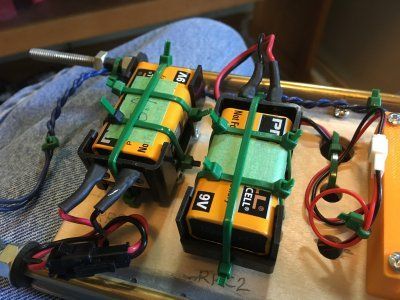
9V Battery Mounting
Our first recommendation centers around the topic of optimal 9V battery mounting and orientation. The underlying intent is to minimize and prevent the potential for battery clip/contact separation.
Whenever possible (av-bay space permitting) this "axially perpendicular" orientation as shown on the left is most ideal. If this isn't an option in your project, ensure the battery and the battery clip are secured top-to-bottom and that no inertial forces can affect this connection. The battery must also be securely mounted to the sled, preferably in a dedicated 9V battery holder.
9V Battery Choices
9V Batteries are
NOT CREATED EQUAL!
After some extensive deconstruction, documentation, and testing conducted by Martin Quanci, we now have a much clearer understanding about 9V battery performance and the underlying internals of these battery types and how their construction affects the overall performance of your avioincs.
What this detailed reporting and results show is there are basically (3) 9V battery construction types and performance classes as illustrated in the following battery teardown pictures:
5 Amp Class (Code 6LR61)
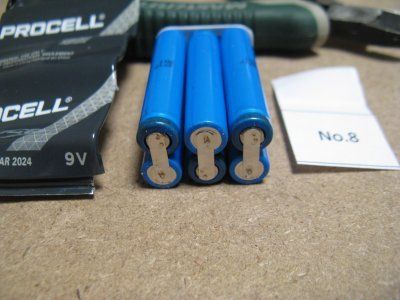
2 Amp Class (Code 6LP3146/6LF22)
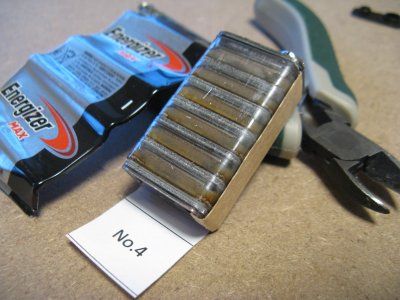
1 Amp Class (6F22)

This next table shows all of the batteries tested grouped together by battery cell type. The great thing about the Battery Codes is they're always printed on the case and packaging, and it's an industry-standard code too. This allows you to easily determine the battery's basic construction of the cells and associated performance.
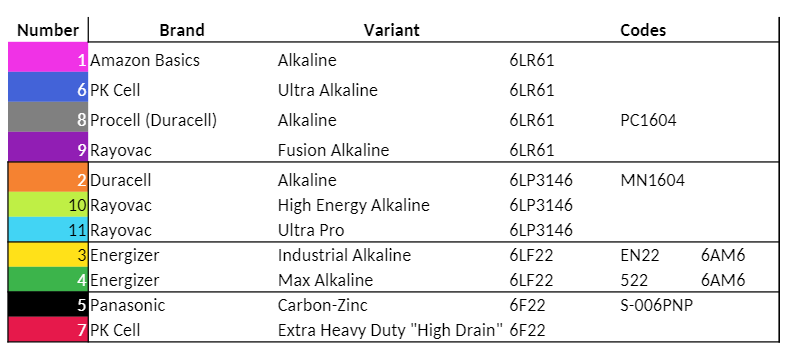
Here are graphs of the voltage and current tests over a 7 month test timeframe. The amperage is from the first 2-second "shorting". The subscript "2" on the "A" means the amps after 2 seconds. There is a similar amperage chart with a subscript of "19" which was the current after 19 seconds. (2-second short + 15-second recovery + 2-second short). Each of the measurements represent a worst case deployment scenario for a typical dual-deployment rocket flight.
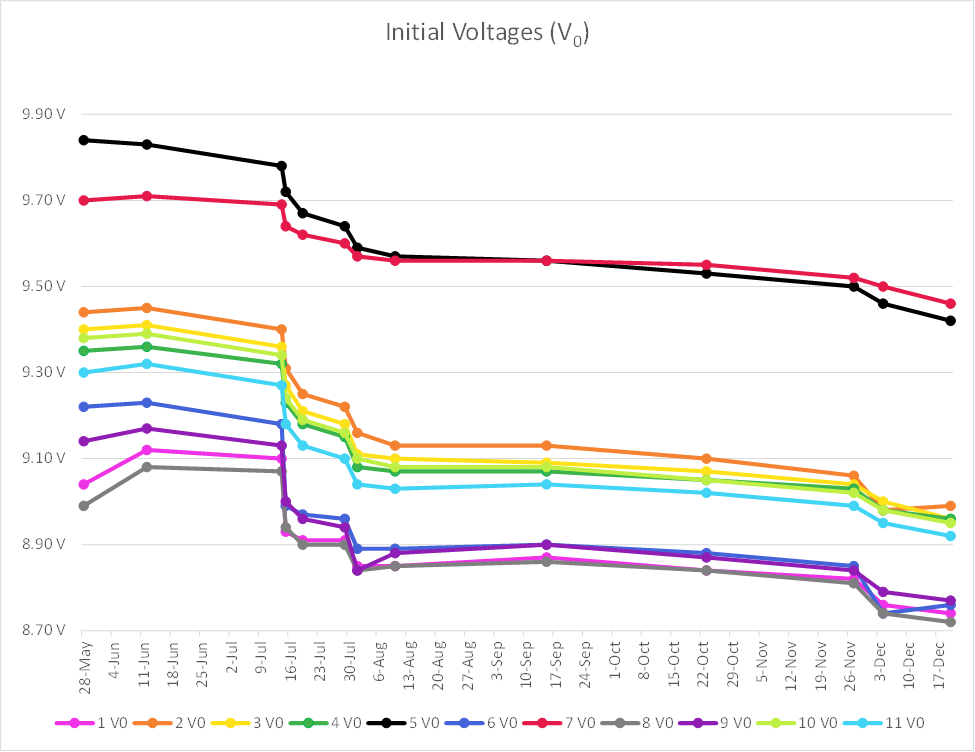
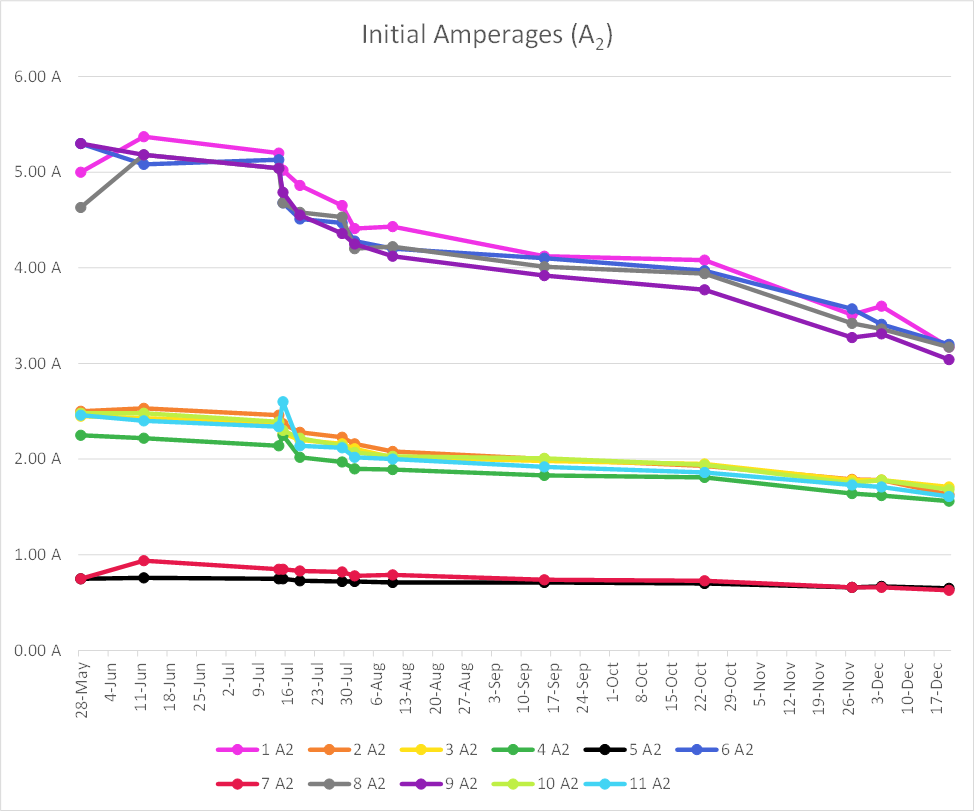
In general, the electric matches we use for deployment charges require a minimum 1 Amp "all fire" current. You can see that all the (6) cell 9V batteries in the "6LR61" class consistently deliver the most current for deployment purposes.
We strongly recommend using this class of 9V battery whenever possible with the RRC2 and RRC3 altimeter systems.
As a second choice, all the 9V batteries in the "6LP3146" will also suffice, however there's less of a power reserve margin and you'd be wise to consider changing them out more often over time.
One thing also to consider is these tests do not represent the power draw of the altimeter while your rocket is sitting on the rail waiting for launch at a launch event. Albeit, this power draw requirement is generally smaller than a deployment event, it does add up over time and needs to be considered as you monitor your battery voltage across its flight history.

